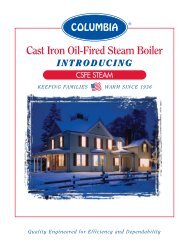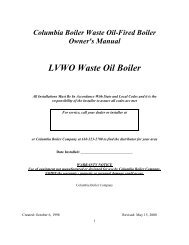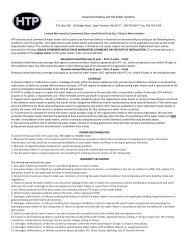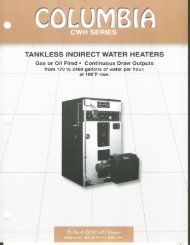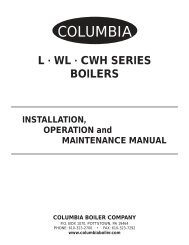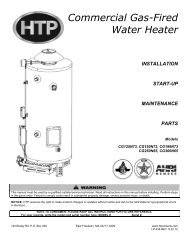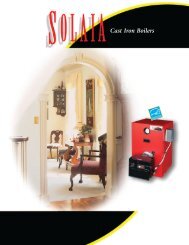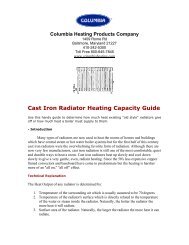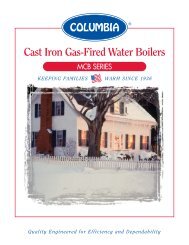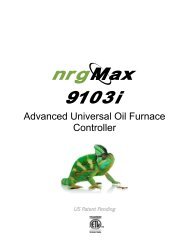CSVB Series II - Columbia Heating
CSVB Series II - Columbia Heating
CSVB Series II - Columbia Heating
- No tags were found...
Create successful ePaper yourself
Turn your PDF publications into a flip-book with our unique Google optimized e-Paper software.
VENT INSTALLATIONRemoving Existing Boiler From Common VentingSystemWhen an existing boiler is removed from a commonventing system, the common venting system is likely to betoo large for proper venting of the appliances remainingconnected to it.At the time of removal of an existing boiler, the followingsteps shall be followed with each appliance remainingconnected to the common venting system placed inoperation, while the other appliance remaining connectedto the common venting system are not in operation.1. Seal any unused openings in the common ventingsystem.2. Visually inspect the venting system for proper size andhorizontal pitch and determine there is no blockage orrestriction, leakage, corrosion and other deficiencieswhich could cause an unsafe condition.3. Insofar as is practical, close all building doors andwindows and all doors between the space in which theappliances remaining connected to the common ventingsystem are located and other spaces of the building.Turn on clothes dryers and any appliance not connectedto the common venting system. Turn on any exhaustfans, such as range hoods and bathroom exhausts, sothey will operate at maximum speed. Do not operate asummer exhaust fan. Close fireplace dampers.4. Place in operation the appliance being inspected. Followthe lighting instructions. Adjust thermostat so appliancewill operate continuously.5. Test for spillage at the draft hood relief opening after 5minutes of main burner operation. Use flame of a matchor candle, or smoke from a cigarette, cigar, or pipe.6. After it has been determined that each applianceremaining connected to the common venting systemproperly vents when tested as outlined above, returndoors, windows, exhaust fans, fireplace dampers and anyother gas-burning appliance to their previous conditionsof use.7. Any improper operation of the common venting systemshould be corrected so the installation conformswith the National Fuel Gas Code, ANSI Z223.1/NFPA54. When re-sizing any portion of the common ventingsystem, the common venting system should be re-sizedto approach the minimum size as determined using theappropriate tables in Chapter 13 of the National FuelGas Code, ANSI Z223.1/NFPA 54.8. It is recommended that existing gas vents be checkedto be sure they meet local codes.12



